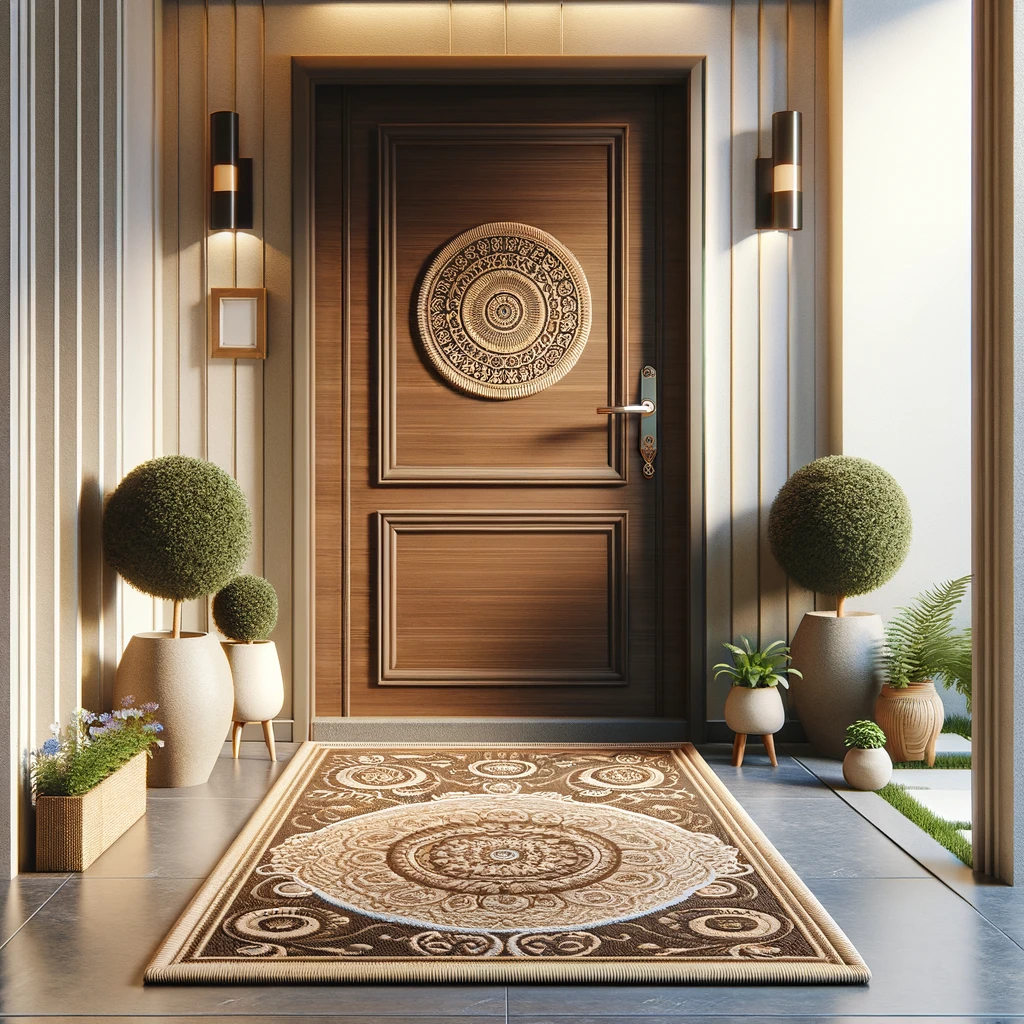Table of Contents
ToggleIn the quest for creating comfortable, clean, and aesthetically pleasing living spaces, the humble mat plays a crucial role that often goes unnoticed. From welcoming guests at the front door to preventing dirt from trekking across your freshly cleaned floors, mats are an essential element of home decor and functionality. This comprehensive guide delves into the various types of mats suitable for different home environments, both indoors and outdoors, highlighting the benefits of using specific mat types in different areas of the home. Additionally, we compare two popular materials—rubber and coir—to help you make an informed decision for your home.
Indoor vs. Outdoor Mats: Understanding the Difference
Indoor Mats
- Functionality and Comfort: Indoor mats are primarily designed to keep the interiors of your home clean and comfortable. Placed at entryways, they help in absorbing moisture and capturing dirt from shoes.
- Materials and Design: Common materials include cotton, microfiber, and nylon, which are chosen for their absorbency and ease of cleaning. Designs range from minimalistic to decorative, seamlessly blending with interior decor.
Outdoor Mats
- Durability and Resistance: Outdoor mats must withstand the elements—be it rain, snow, or the scorching sun. Therefore, they are made from materials like rubber, coir, and polypropylene, known for their durability and weather resistance.
- Function and Aesthetics: They serve not only to clean footwear before entering the house but also as the first decorative element of your home that guests see. Thus, functionality meets aesthetics in outdoor mats.
Benefits of Using Specific Mat Types in Different Areas of the Home
- Entrance Mats: Welcome mats reduce the amount of dirt and moisture entering the home, decreasing the need for frequent cleaning.
- Bathroom Mats: Made from absorbent materials to keep the floor dry and prevent slipping after a shower or bath.
- Kitchen Mats: Often anti-fatigue mats, they provide cushioning underfoot during prolonged periods of standing, such as while cooking or washing dishes.
- Bedroom Mats: Soft, plush mats add warmth and comfort underfoot, especially during colder months, and can complement the room’s decor.
Comparing Materials: Rubber Mats vs. Coir Mats
Rubber Mats
- Durability: Rubber mats are incredibly durable and resistant to water, making them ideal for outdoor use as well as interlock rubber mats for versatile applications.
- Maintenance: They are easy to clean, usually requiring just a hose down with water.
- Usage: Perfect for areas with high foot traffic and adverse weather conditions. Bar mats also fall under this category, offering spillage protection and safety in entertainment areas.
Coir Mats
- Natural Appeal: Made from coconut husk fibers, coir mats offer a rustic, natural look that complements any entrance.
- Scraping Ability: The coarse texture is excellent for scraping off mud and snow from shoes.
- Absorbency: While coir is absorbent, it can hold moisture for longer periods, which may lead to mildew if not dried properly.

Specialised Mats for Home and Lifestyle
- Logo Mats: Customizable mats that can feature a family name or a special welcome message, adding a personal touch to your home’s entrance.
- Yoga Mats: Specially designed for yoga practitioners, these mats provide the necessary grip and cushioning for a safe and comfortable practice at home.
Conclusion
The choice between rubber and coir mats—or any other material, for that matter—largely depends on the specific needs of the home environment, personal aesthetic preferences, and practical considerations such as climate and foot traffic. Rubber mats are unmatched in durability and ease of maintenance, making them suitable for challenging outdoor conditions. Coir mats, on the other hand, offer a warm, welcoming touch with their natural texture and excellent scraping ability, though they require more care to prevent moisture retention.
In conclusion, understanding the types of mats available and their specific benefits allows homeowners to make informed decisions, ensuring that their homes are not only welcoming but also practical and well-maintained.

